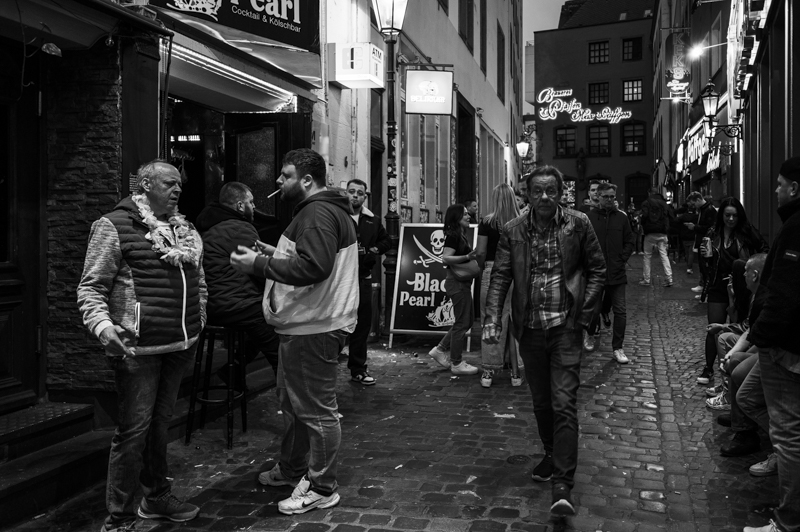Cologne, or Köln in German, stands as one of Germany's most vibrant and historically rich cities. Located on the banks of the River Rhine, Cologne has long been a central hub for trade, culture, and religion, making it one of Europe's oldest and most significant urban centers. This essay explores the complex layers of Cologne's history, its cultural richness, and its architectural marvels, which together encapsulate the spirit of this remarkable city.
Cologne's history stretches back over two millennia, with its origins rooted in the Roman Empire. Founded as a Roman colony in 50 AD under the name Colonia Claudia Ara Agrippinensium, Cologne quickly grew into a major urban center due to its strategic location along the Rhine. The city's Roman heritage is still evident today, with remnants like the Roman Praetorium and the ancient city wall. These archaeological treasures serve as a reminder of Cologne's importance as a provincial capital in Roman times.During the Middle Ages, Cologne emerged as one of the most powerful and prosperous cities in Europe. It became a Free Imperial City in 1475, granting it autonomy within the Holy Roman Empire. This period saw the construction of numerous churches, monasteries, and public buildings, many of which remain integral to the city's landscape. Cologne's importance during the medieval era was further underscored by its role as a major center of trade and commerce, facilitated by its position along the Rhine, which connected it to other significant trade routes across Europe.
During the Middle Ages, Cologne emerged as one of the most powerful and prosperous cities in Europe. It became a Free Imperial City in 1475, granting it autonomy within the Holy Roman Empire. This period saw the construction of numerous churches, monasteries, and public buildings, many of which remain integral to the city's landscape. Cologne's importance during the medieval era was further underscored by its role as a major center of trade and commerce, facilitated by its position along the Rhine, which connected it to other significant trade routes across Europe.
Cologne's cultural identity is a tapestry woven from its rich history, diverse population, and religious significance. The city is renowned for its vibrant arts scene, a tradition that dates back to the Middle Ages when Cologne was a center for Gothic art. This artistic legacy continues today, with the city hosting numerous galleries, theaters, and museums, including the Wallraf-Richartz Museum and the Museum Ludwig, which houses one of the most important collections of modern art in Europe.
One of the most distinctive aspects of Cologne's culture is its association with the Rhineland Carnival, or Kölner Karneval, a tradition that dates back to the Middle Ages. The Carnival, known for its exuberant parades, elaborate costumes, and lively street parties, is one of the largest and most famous in Europe. It reflects the city's spirit of joie de vivre and its deep-rooted customs, making it a cornerstone of Cologne's cultural identity.Cologne is also a city of religious significance,particularly within the Christian tradition. The city's most famous landmark, the Cologne Cathedral (Kölner Dom), is a UNESCO World Heritage Site and one of the largest cathedrals in the world. The cathedral, which took over six centuries to complete, is a masterpiece of Gothic architecture and houses the relics of the Three Magi, making it a major pilgrimage site. Cologne's religious heritage is further reflected in its numerous churches, many of which date back to the Romanesque period and form part of the city's unique architectural landscape.
Cologne's architectural landscape is a testament to its long and complex history. The city's architecture is characterized by a blend of Roman, medieval, Gothic, and modern influences, creating a unique urban tapestry that reflects the various phases of its development. The Cologne Cathedral stands as the most iconic example of Gothic architecture in the city. Its twin spires, which dominate the city's skyline, symbolize Cologne's medieval grandeur. The cathedral's interior is equally impressive, with its soaring vaulted ceilings, intricate stained glass windows, and the Shrine of the Three Kings, a gold reliquary that is one of the most important works of medieval art. In addition to the cathedral, Cologne boasts a remarkable collection of Romanesque churches, each with its own distinct character. Churches such as St. Gereon's, with its unusual decagonal dome, and St. Maria im Kapitol, one of the largest Romanesque churches in Germany, offer insight into the architectural innovations of the period and the city's religious significance.
Cologne's architecture also reflects the city's resilience in the face of adversity. During World War II, much of Cologne was heavily bombed, resulting in the destruction of over 90% of the city center. The post-war reconstruction efforts led to a blend of old and new, with many historic buildings being meticulously restored alongside modernist structures that reflected the city's desire to rebuild and modernize. This contrast is particularly evident in the city's contemporary architecture, such as the Kolumba Museum, designed by Peter Zumthor, which seamlessly integrates the ruins of a bombed church with a modern museum space.
Cologne is a city that embodies the intersection of history, culture, and architectural splendor. From its Roman origins to its medieval prominence, from its vibrant cultural traditions to its resilience in the face of modern challenges, Cologne represents a microcosm of European history and civilization. The city's ability to preserve its rich heritage while embracing modernity makes it a unique and dynamic urban center, where the past and present coexist harmoniously. As one of Germany's most important cultural and historical cities, Cologne continues to captivate visitors and residents alike, offering a window into the complex and multifaceted story of Europe.
(Text generated by AI)



















Comments
Post a Comment